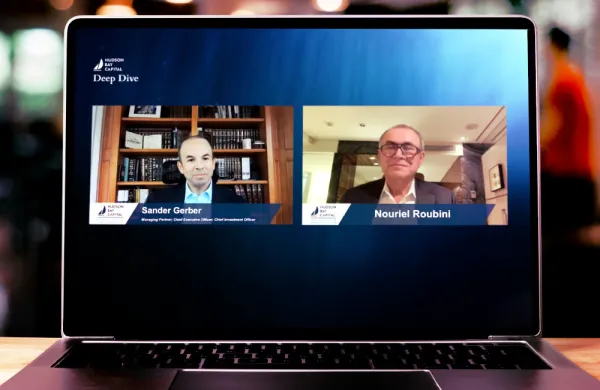Harry Markowitz, the creator of modern portfolio theory, is credited with saying diversification is “the only free lunch in finance.” He showed that by adding risky assets that are less than perfectly correlated with each other to a portfolio — the less correlated, the better — you can reduce total portfolio risk without reducing returns. In some cases you can even increase portfolio return while still lowering risk, the holy grail of investing.
Markowitz’s research still serves as the bedrock of most investors’ portfolio construction methods, through tools such as Mean Variance Optimization (MVO). Although mathematically a bit complex in practice, in layman’s terms, MVO allows allocators to explicitly measure and modify the amount of portfolio risk they must take to achieve a given required rate of return by changing the mix and weighting of different asset classes. By spreading the risk across different asset classes, or inter-asset diversification, investors can ensure the portfolio remains resilient if a few assets suffer broad market declines.
Sometimes, more is better.
Unfortunately, however, what was a beneficial side effect of including additional assets in a portfolio has become the primary objective of many allocations. Too often, new strategies are sold on their diversification potential — or old ones repurposed in its name — when in reality it’s simply a sales pitch used to rationalize lower return expectations.
Diversification, although important, was never the main objective. It was called a free lunch for a reason. It’s a perk, not the main attraction — sort of like going to Vegas only for the free food. If that’s the whole point, it will probably cost a whole lot more than it’s worth.
Similarly, it’s still important to diversify within asset classes. Just as some assets zig while others zag, some managers do, too. Intra-asset class diversification is this process, and it usually doesn’t get as much mind share from investors as does the asset allocation process. But — given that allocators investors spend most of their time picking managers and not asset classes — it probably should. The challenge remains figuring out how much is enough.
When investors do think about balancing the tradeoff of concentration versus diversification within an asset class, they are usually concerned with practical matters such as the number of dedicated staff, due diligence budgets, and how time consuming the manager approval process is. Certainly these frictions are important. You shouldn’t build a portfolio of 300 managers if you can only monitor one-tenth of that. However, perhaps these considerations should begin with the asset class objective, because there is a big difference between an alpha and a beta allocation.
In a beta allocation — for instance public equity markets — the main goal of diversification is to reduce idiosyncratic risk, or the risk of an individual security causing returns to trail the market. In this case, the addition of another position to the portfolio reduces both the potential for outsize returns as well as the possibility of trailing the market. The more securities you own, the more like the market you become until eventually you are the market. Risk is relative.
Alternatives, however, don’t fit typical asset class buckets, and how the portfolio is constructed can result in widely different return expectations. In an alpha allocation, risk is also not normally distributed, which simply means the downside of such strategies is generally larger than would otherwise be expected.
Perhaps more importantly, limited partnerships contractually provide far greater investment discretion and operational latitude to the investment manager, for good and bad. In effect, investors hand general partners the keys and let them drive. And as a result of skewed distributions, leverage, and yes, sometimes malfeasance, blow-ups do occur. So, the objective of diversification in alternatives is typically focused more towards reducing the impact on the portfolio of a significant negative manager event, rather than just mitigating underperformance compared to a benchmark. Risk is largely absolute.
In beta allocations, adding more line items to the portfolio can be a good thing; it increases the odds that the portfolio tracks the market. In alternatives however, over-diversifying decreases the potential for alpha, which is by definition, idiosyncratic. The more managers you add to the portfolio, the more it begins to mirror the overall market, and that means increasing beta, which is not a good thing in this case. Instead of diversification, that’s de-worse-ification — actually making a portfolio riskier by adding more positions.
A 2002 article in the Journal of Alternative Investments showed that after just five managers, the volatility and skewness (a measure of tail risk) of a portfolio of hedge funds were reduced by approximately 75 percent. This research showed that there was marginal additional diversification benefit above ten or fifteen managers, and at that level, both the correlation to the equity market and kurtosis (another measure of tail risk) actually began to increase. It’s clear: Having more managers may reduce the economic impact of a single blow-up, but it increases other financial risks.
There is another non-financial risk in alternatives that also matters to institutional investors, and that’s headline risk — the chance that one of the managers in your portfolio ends up in the press for the wrong reasons. The total probability of having such an event in your portfolio increases with each additional manager added. At the extreme, if an investor becomes the market, then every single headline event in the industry will occur in their portfolio.
It’s not only personally bad for your career if that happens —I know people for whom it has essentially ended their careers — it can also seriously damage the brand of the organization and erode the goodwill of constituents. This can have lasting consequences on the institution’s ability to meet its foundational objectives.
For these reasons, we’ve tried to keep the number of core relationships in our hedge fund and private equity allocations relatively small, despite the challenges this brings to allocators who need scale. No line item should be added to a portfolio just to fill a bucket or simply because it promises diversification.
Sometimes, more is worse, and by keeping a tight portfolio, we’re hoping to avoid the problems of de-worse-ification.







